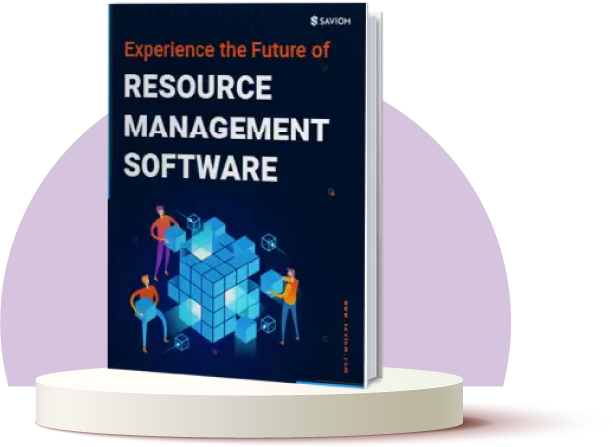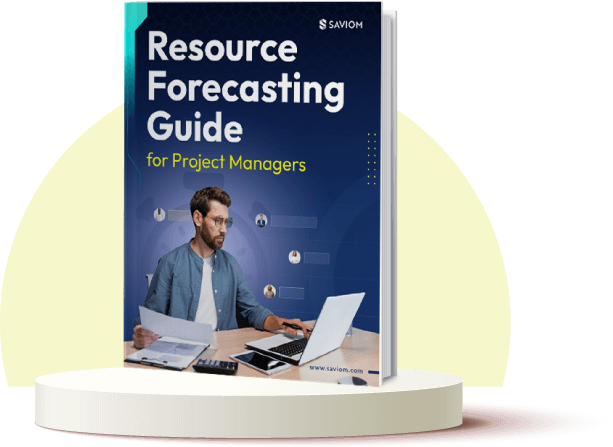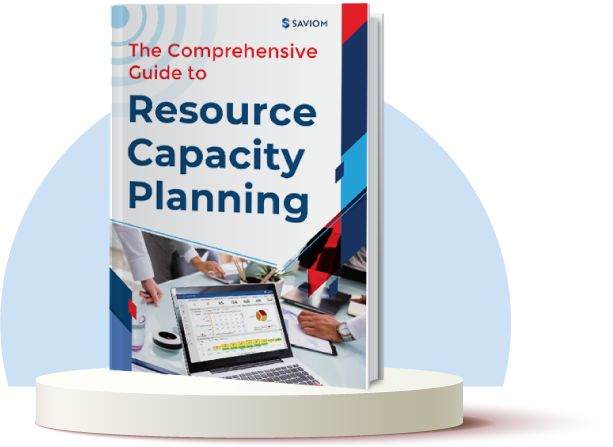A recent McKinsey survey found, “Out of 1,240 global business leaders, nearly 80% consider capability building crucial for their company’s long-term growth.”
This statistic highlights a critical business priority- strengthening workforce capabilities to drive innovation, navigate market changes, and maintain a competitive edge.
However, without a structured approach, organizations may struggle to upgrade workforce competencies, leading to poor performance and missed business opportunities. Over time, this impedes the firm’s ability to scale operations and ensure long-term financial viability.
To stay ahead, organizations must implement capability-building initiatives that empower employees with the right skills and expertise. These measures help them cultivate a future-ready workforce and drive business success.
In this blog, we will delve into the fundamentals of capability building, its significance, and key steps to implement it effectively.
What is Capability Building?
Capability-building is a strategic process that helps develop and strengthen the workforce’s skills, knowledge, and abilities to achieve future business goals successfully. It involves defining the company’s long-term vision, evaluating the employees’ existing capabilities, and acquiring or enhancing existing skills if necessary to drive sustainable growth.
Now that we understand capability building, let’s comprehend the difference between capacity, capability, and competency.
Capacity vs. Capability
While the terms ‘capacity’ and ‘capability’ are often used interchangeably, they represent distinct meanings. Capacity refers to resources such as people, time, equipment, etc., available to complete tasks or projects within a specific timeframe.
On the other hand, capability refers to the skills, knowledge, and abilities to perform a task effectively. While capability enhances the quality of task execution, capacity determines if the organization has the right resources at the right time and cost to accomplish the task.
Capability vs. Competency
Competency refers to the specific skills, knowledge, and attributes that personnel possess. Capability, on the other hand, is a broader term and focuses on the overall ability of an individual to perform tasks.
While competency ensures employees can perform their current tasks efficiently, capability emphasizes enhancing these skills to achieve future organizational goals and stay competitive.
As we now know the fundamental differences between capacity, capability, and competency, let’s learn why capability building is important.
What is the Importance of Capability Building?
Capability building helps employees improve their existing skills and learn new ones, which makes them more effective in their roles. As they gain expertise, productivity increases, and overall business performance improves. Resultingly, a well-trained workforce leads to higher efficiency and greater customer satisfaction.
Moreover, organizations that focus on capability building can quickly adapt to change and seize new opportunities. By enhancing their workforce’s skills and abilities, these organizations can take on diverse projects, enter new markets, boost profitability, and stay competitive.
Investing in capability building also attracts and retains top talent because employees are likelier to stay with companies that offer growth opportunities. Thus, a strong learning culture ensures a robust pool of skilled professionals that contribute to sustained business growth.
Now that we understand the importance of capability building, let’s look at some examples of how individuals can develop their capabilities.
Read More: What is Talent Management? A Comprehensive Guide
Individual Capability Building Examples
Individual capability building helps employees develop skills and improve performance. Following are key examples of how professionals can enhance their capabilities:
Training Programs and Workshops
Providing structured training, upskilling, and multiskilling opportunities enables individuals to acquire new skills, refine existing ones, and develop expertise across multiple functions. Further, workshops offer hands-on experience and industry exposure that equip employees with practical knowledge they can immediately apply in their roles.
Mentoring and Coaching
Personalized guidance from experienced professionals helps employees navigate challenges, build confidence, gain clarity on their goals, and enhance their skills. Moreover, this support helps boost performance, strengthens decision-making abilities, and enables employees to contribute more effectively to the firm’s success.
Read More: What is Skill Development? 10 Best Strategies to Build a Future-Ready Workforce
Online Courses and E-Learning
This method offers flexible, interactive learning through videos, modules, and exercises that help the workforce develop specialized skills and deepen existing knowledge at their own pace. Additionally, it helps staff stay updated with industry trends and emerging technologies, enabling them to adapt to evolving business needs.
Peer-to-Peer Learning
Peer-to-peer learning fosters collaborative knowledge-sharing among employees, allowing them to learn from each other’s experiences and expertise. Through informal interactions, they can exchange insights, solve problems together, and offer constructive feedback. This improves team dynamics and encourages mutual growth.
Participation in Professional Networks
Engaging in professional networks allows employees to connect with industry peers, exchange ideas, and stay informed about trends and best practices. These networks offer access to new opportunities and resources, strengthen employees’ personal brand, increase visibility, and open doors for career advancement.
Attending Conferences and Seminars
These events provide opportunities for in-depth learning through expert-led sessions, panel discussions, and interactive workshops. Employees can stay informed on the latest industry trends, emerging technologies, and cutting-edge research, gaining valuable knowledge that can be directly applied to their roles to drive personal growth.
Self-Directed Learning
Self-directed learning empowers employees to take control of their development by identifying their learning needs and pursuing resources independently. Through books, online courses, podcasts, or research, employees can explore topics that align with their interests or address specific gaps in their skills, enhancing their capabilities.
After understanding the examples of individual capability building, let’s explore examples of organizational capability building.
Organizational Capability Building Examples
By strengthening its workforce’s skills and knowledge, an organization becomes more agile, responsive to changes, and efficient in achieving its goals. Here are key examples of how to build organizational capabilities:
Talent Acquisition
Talent acquisition ensures that organizations attract top-tier candidates with the right skills, cultural fit, and potential for growth. By building a strong recruitment pipeline, organizations can quickly fill critical roles, strengthen the workforce, improve team performance, and stay competitive.
Read More: What is a Talent Acquisition Strategy & How to Create an Effective One in Your Firm?
Leadership Development Programs
Organizations must cultivate future leaders by providing targeted training, mentorship, and hands-on experience. These initiatives help high-potential employees transition into leadership roles, ensuring strategic alignment across departments, enhancing decision-making, fostering strong leadership, and ensuring long-term business stability.
Employee Skills Advancement
Employee skill development focuses on enhancing the workforce’s capabilities by providing training and resources to adapt to industry changes, improve performance, and meet organizational goals. Further, it allows organizations to ensure consistency, boost productivity, and enhance overall efficiency.
Team Building and Cohesion
Firms that prioritize team-building initiatives, such as collaborative projects, workshops, or retreats, foster high-performing teams that communicate effectively, share knowledge, and work towards common goals. These efforts help build resilient teams that drive innovation and enhance organizational efficiency.
Process Improvement
Organizations can drive process improvement by refining workflows, standardizing best practices, and embracing efficient methods. Additionally, streamlining operations reduces delays, enhances service delivery, and increases responsiveness to market changes.
Read More: Operational Efficiency: What is it, and How to Maximize & Boost ROI?
Risk Management
Managers must prioritize identifying, assessing, and mitigating potential risks, ranging from financial uncertainties to operational disruptions. This enables firms to anticipate potential setbacks, navigate uncertainties with confidence, and safeguard long-term growth prospects.
Technological Proficiency
By prioritizing technological proficiency, firms can integrate the latest tools and systems into their operations, improving efficiency, collaboration, and decision-making. Whether through investing in automation, data analytics, or AI, enhancing technological capabilities allows managers to innovate faster and stay future-ready.
As we are thorough with the examples of organizational capability development, it’s time to discuss how a capability-building model should be developed.
How to Develop a Capability Building Model?
Developing a capability-building model requires strategic planning and execution. Following are the steps to create an effective capability-building framework:
Assess Organizational Goals and Future Needs
Firms must assess both long- and short-term objectives to determine whether the existing talent pool is equipped to meet this upcoming demand. For that, they can collaborate with senior leadership and identify core competencies required to meet organizational goals successfully.
Additionally, they can consider external factors like industry shifts, evolving client expectations, and technological advancements to anticipate future requirements and proactively acquire or develop the skills needed to stay competitive. This will enable them to build a resilient workforce, drive innovation, and sustain long-term growth.
Perform Skill Gap Analysis
Managers must evaluate upcoming business needs against the existing talent pool by assessing key attributes like skills, expertise, role, location, etc., to determine if the firm has the required capacity. If not, organizations can design suitable development programs to address these gaps effectively.
For resource shortages, managers can initiate training, upskilling, or phased hiring to acquire critical skills. Conversely, for resource surplus, bring forth project timelines or sell extra capacity at competitive rates. This helps reduce unnecessary costs, minimizes disruptions, and creates a future-ready workforce.
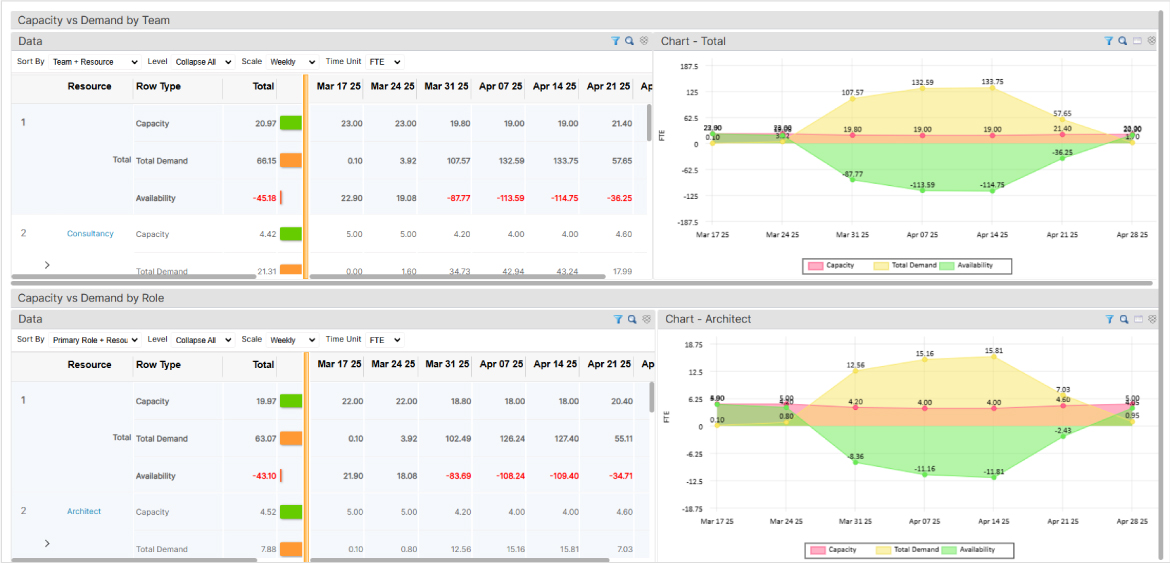
SAVIOM’s Capacity vs. Demand BI report offers managers a clear view of resources across multiple dimensions to plan upcoming project requirements efficiently.
Clearly Outline Learning Objectives
Businesses must define clear and measurable learning objectives that align with organizational goals and address current and future business needs. By specifying the skills, knowledge, and competencies employees need to develop, organizations ensure that the development efforts are purposeful and contribute to targeted growth.
Once learning objectives are set, managers can implement focused training programs to build a capable workforce. This strategy enables employees to gain practical, role-specific skills that directly contribute to improved individual performance, driving long-term organizational success and profitability.
Develop Tailored Learning Programs
Firms must provide personalized training programs to help employees acquire specific skills or gain the practical knowledge they need to perform their roles more effectively. These not only help employees grow their skill sets but also boost engagement and morale by showing the organization is invested in their personal growth.
This fosters a positive work culture where employees feel valued and supported, building a loyal talent pool. It improves employee retention, enhances team cohesion, and strengthens commitment to organizational goals, promoting continuous improvement and success.
Read More: 12 Simple and Effective Ways to Reduce Employee Turnover in 2024
Offer Learning Resources and Ongoing Support
Providing diverse learning resources such as online courses, industry reports, books, etc., helps employees stay current with trends, gain new expertise, and drive professional growth. Additionally, promoting mentorship programs, discussion forums, & peer learning initiatives helps employees gain key insights from others’ experiences.
This support system empowers employees to refine their abilities, enhance productivity, and advance their careers. In turn, organizations benefit from a highly skilled, motivated workforce that drives innovation, operational efficiency, and continued profitability.
Encourage Skill Application Through Practical Exercises
Businesses should facilitate the application of newly acquired skills by incorporating hands-on exercises, real-world scenarios, and project-based learning into training programs. This can include role-playing, simulations, and collaborative tasks that allow employees to directly implement their learning.
When employees apply their skills in practical contexts, they reinforce their learning and become more confident in handling future challenges. This enhances workforce performance, driving higher productivity and contributing to overall organizational efficiency.
Implement a Continuous Feedback Loop
The next step involves regularly gathering input from employees, managers, and other stakeholders to assess the effectiveness of L&D initiatives and overall workforce growth. This process includes conducting peer reviews, providing constructive feedback, etc., to understand overall progress and areas of improvement.
Unlike periodic performance evaluations, a feedback loop enables continuous communication, which allows timely adjustments based on real-time insights. This helps organizations refine training strategies, address skill gaps, and boost employee engagement, accelerating capability-building efforts and enhancing workforce performance.
Read More: 7 Proven Ways to Give Constructive Feedback to Your Employees
Set Key Metrics to Measure Progress
Tracking progress using well-defined metrics helps organizations evaluate the success of their capability-building initiatives. Key indicators like skills improvement, employee engagement, training completion rates, etc., can be used to assess the effectiveness of the program and compare it with the expected outcome.
Furthermore, measuring how employees apply their new skills to their roles allows organizations to ensure that individual development aligns with broader business goals. By analyzing these metrics, companies can fine-tune their learning programs, address gaps, and drive continuous workforce development.
Read More: How to Track Employee Productivity? 7 Effective Ways
Adopt the Right Technology Solution
Firms must adopt the right technology solutions that offer key features like personalized learning paths, real-time progress tracking, data analytics, and more. These tools help employees receive tailored training, track workforce performance, and access learning resources anytime, leading to better engagement and faster skill development.
By leveraging collaboration tools, and seamless system integration, organizations can foster a more interactive and motivating learning environment. These features improve learning outcomes, drive innovation, boost productivity, and enhance organizational efficiency.
Now that we know how to develop a capability-building model, let’s understand the role of a resource management tool in building capabilities.
How Does a Resource Management Tool Help Firms in Capability Building?
Advanced resource management software enhances workforce capabilities by improving visibility and optimizing planning. Here’s how:
- The tool provides 360-degree visibility into key resource attributes such as skills, competencies, experience, etc., enabling managers to fully understand the available talent.
- The tool’s forecasting and capacity planning feature helps forecast and fill the capacity vs. demand gaps in advance. By anticipating future requirements, firms can take proactive measures to train, upskill, or hire employees and build a competent talent pool.
- The embedded competency matrix helps track and record every employee’s current skill, competencies, certifications, etc., in real-time. This ensures visibility across the organization and helps enhance employee skills efficiently.
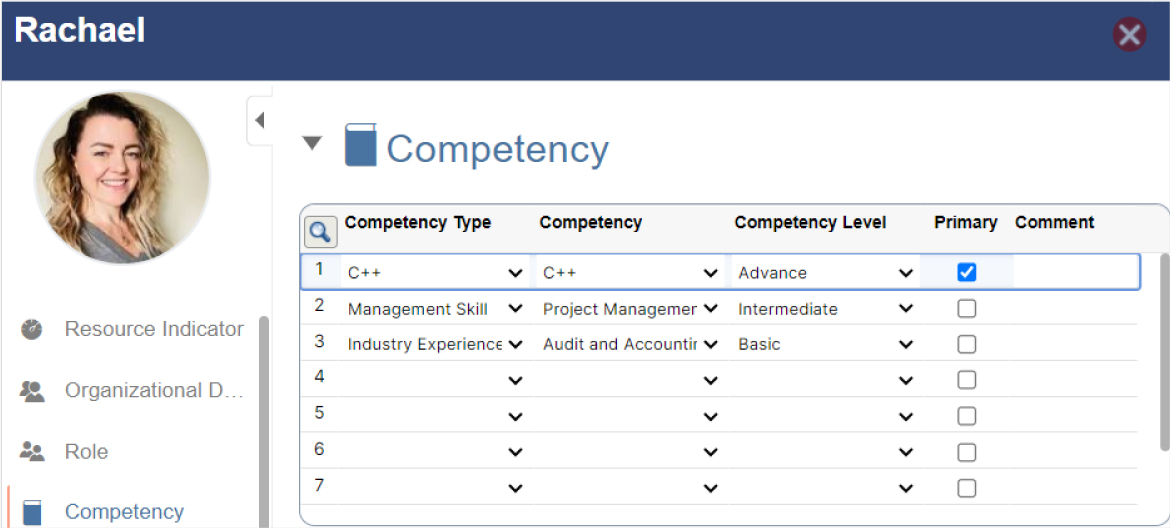
SAVIOM’s Competency Matrix provides a clear overview of employee skills and competency levels to match the right resources to the right tasks.
- The software offers real-time BI reports and dashboards that track resource utilization, performance, and project progress. This enables managers to gain key insights into resource metrics and make informed decisions.
Read More: How Can You Make Data-Driven Decisions with Resource Management Software?
Key Takeaway: Additional Tips for an Effective Capability-Building
Here are some additional tips to strengthen your capability-building efforts and ensure long-term success:
Model Capability Building from the Top
Senior leaders should lead by example in capability building, actively participating to inspire employee engagement and foster trust. Their involvement motivates others to engage in training and create a culture of continuous development.
Build Strong Foundations and Scale Up
Firms must empower employees to contribute ideas and take ownership of improvements. Recognizing their achievements and encouraging active participation sets the stage for long-term success.
Read More: Employee Recognition Programs: Types, Benefits and Best Practices
Focus on Small Incremental Developments
Effective capability building requires focusing on small, incremental developments rather than large, overwhelming changes. Over time, these steady improvements lead to significant personal and organizational growth.
Directly Engage with Your Workforce for Maximum Impact
Actively engaging with employees ensures that capability-building efforts remain relevant and impactful. The more employees are involved, the greater the potential for widespread transformation, enhancing organizational outcomes and success.
Leverage Remote Technology for Virtual Learning
Remote technology makes capability building more accessible and flexible, enabling training from anywhere. Additionally, recorded sessions & digital learning platforms allow employees to learn at their own pace, improving knowledge retention.
Read More: 6 Effective Strategies to Create a Smarter Digital Workplace
By applying these tips, organizations can strengthen their capability-building efforts and empower employees to grow in an evolving business environment.
Are you ready to enhance capability building and drive long-term success for your organization?
The Glossary
Read More: Glossary of Resource Workforce Planning, Scheduling and Management



